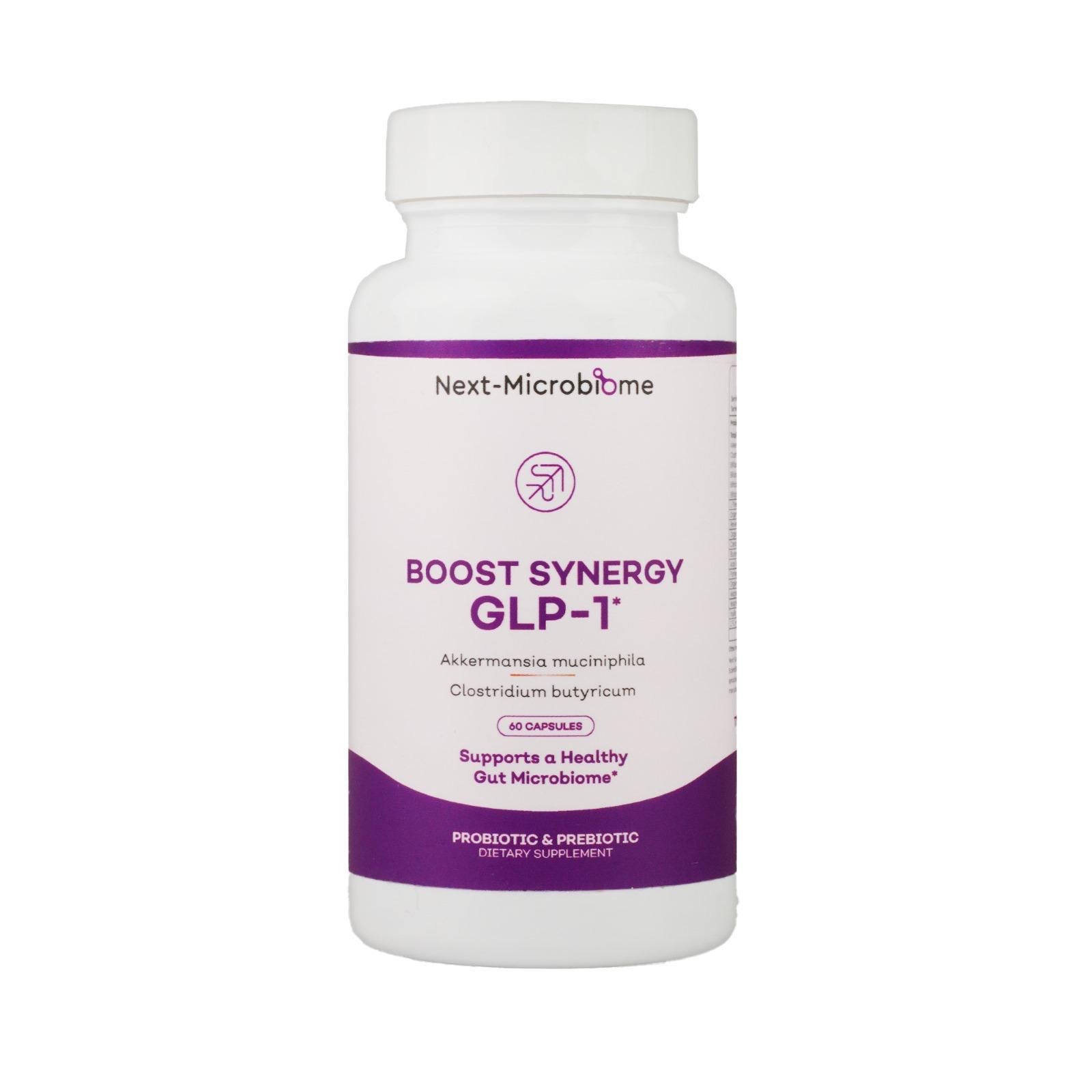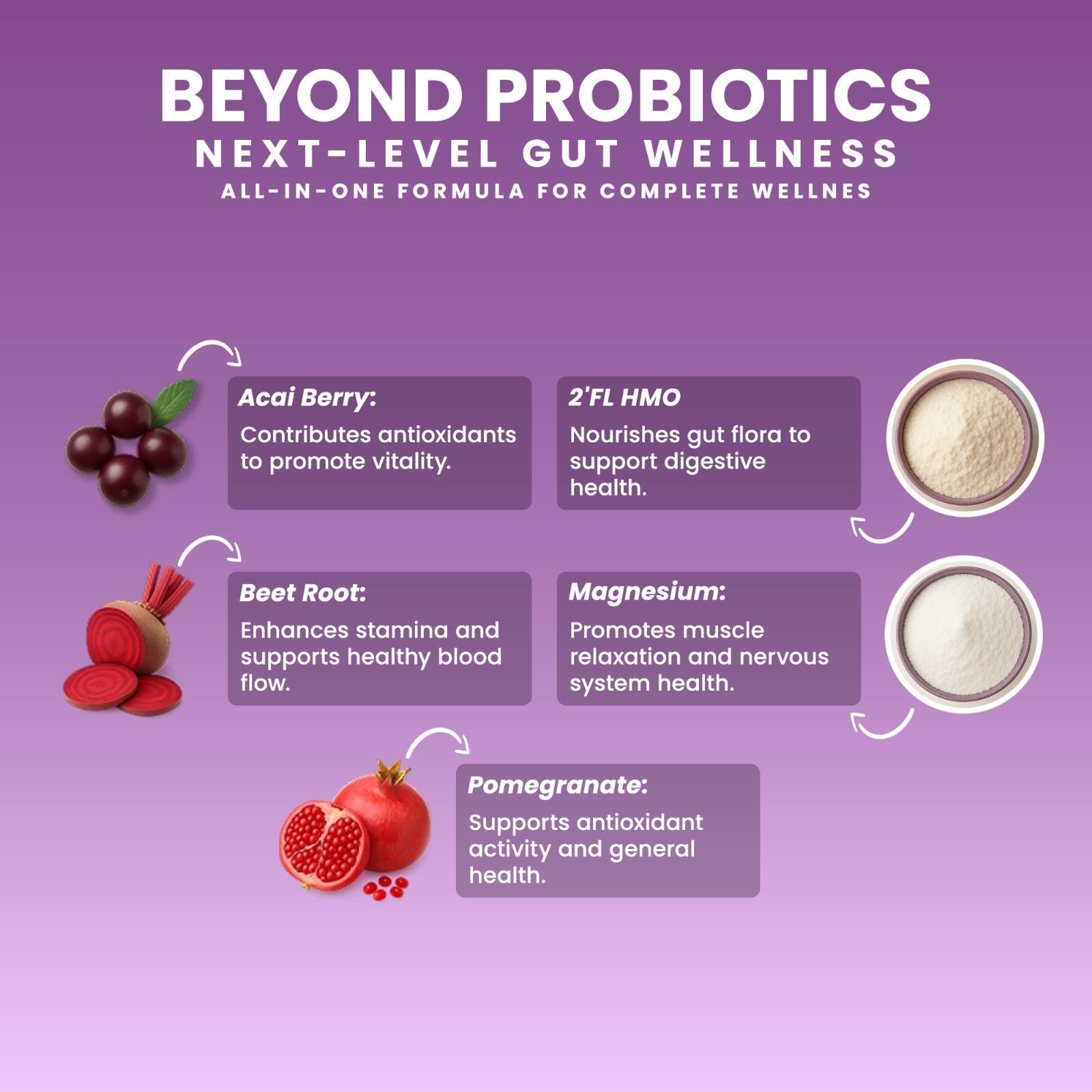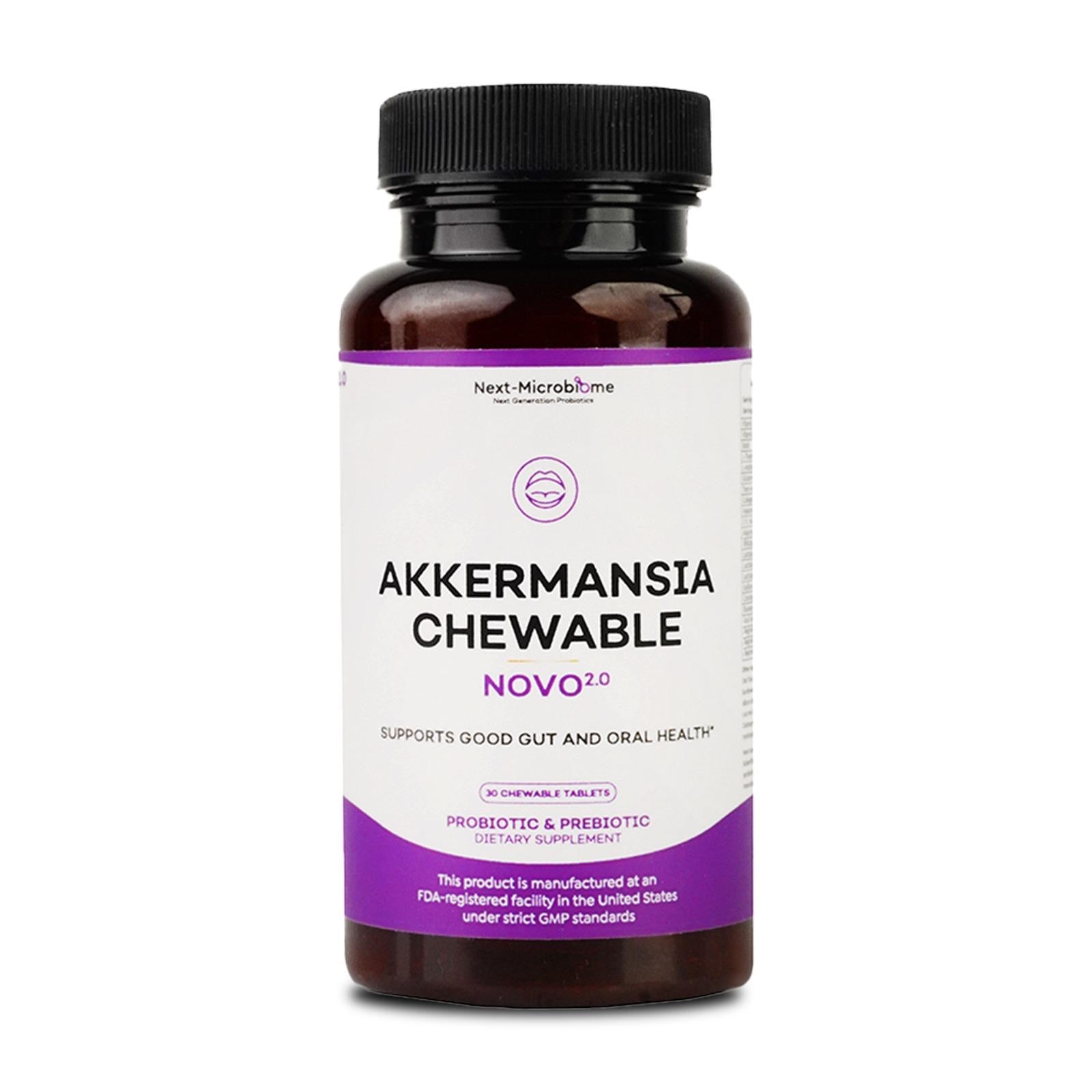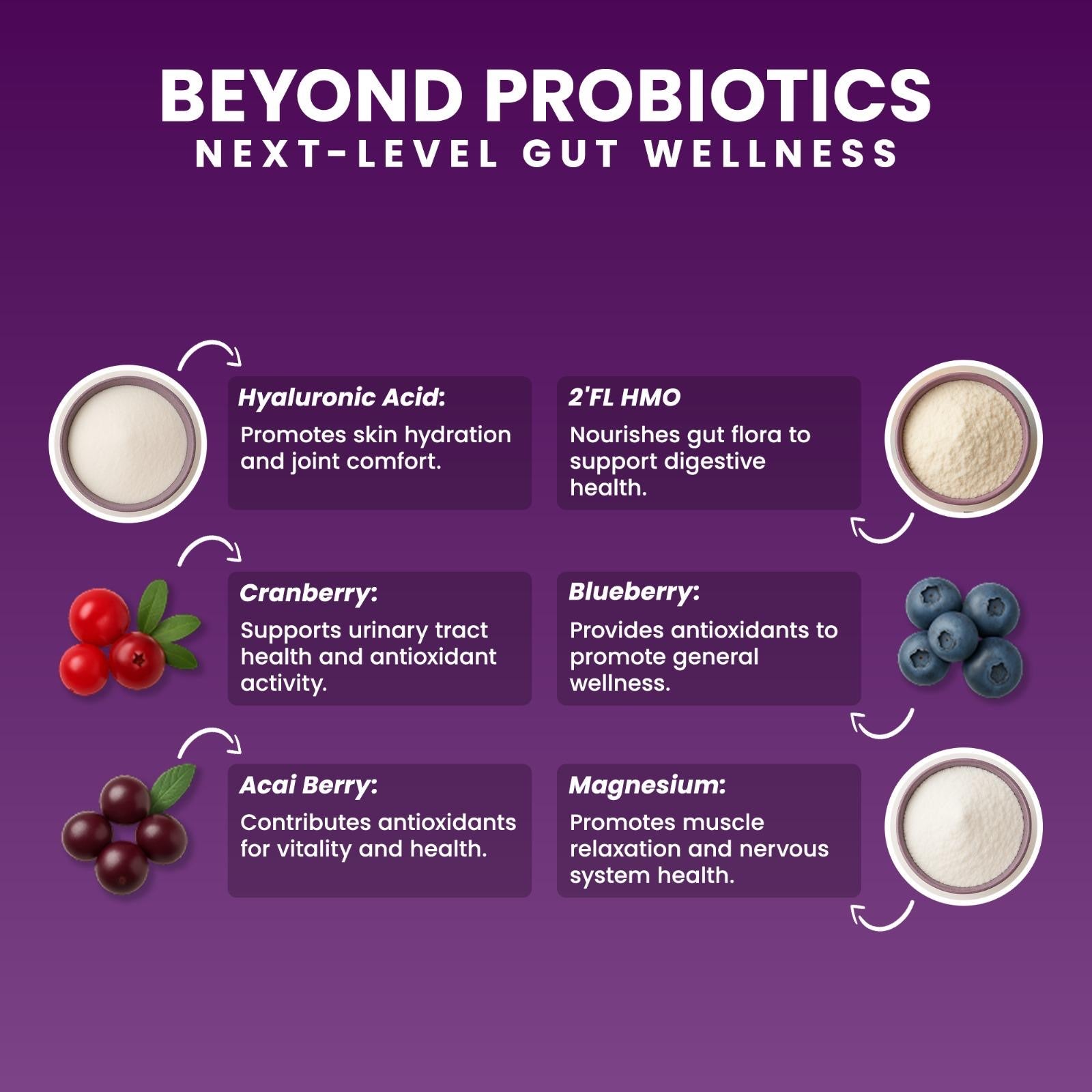
Akkermansia for Gut Health, Oral–Gut Balance & Digestion
Akkermansia: The Missing Microbe for Gut Health, Oral–Gut Balance & Digestive Strength
Akkermansia muciniphila has become one of the most influential bacteria in modern gut microbiome science. Found deep within the protective mucin layer of the intestines, Akkermansia plays a pivotal role in maintaining gut lining integrity, supporting immune balance, regulating inflammation, and promoting metabolic stability.
Unlike most probiotics that operate within the intestinal lumen, Akkermansia works at the foundation of gut health — directly at the interface between the body and the microbial world.
This article explains what Akkermansia is, why it matters, how it strengthens the gut barrier, and how oral–gut microbial interactions enhance the effectiveness of chewable formulations.
What Is Akkermansia muciniphila and Why Is It Important?
Akkermansia muciniphila is a beneficial bacterium that lives in the mucin layer lining the intestinal wall. Its functions include:
-
regenerating and maintaining mucin thickness
-
supporting tight-junction proteins
-
improving metabolic homeostasis
-
lowering inflammation
-
enhancing microbial diversity
A 2024 clinical review in Nutrients concluded that probiotics and prebiotic compounds that influence mucin and gut barrier function significantly improve digestive symptoms and microbiota composition:
👉 https://pmc.ncbi.nlm.nih.gov/articles/PMC10975713/
Higher Akkermansia levels are associated with:
-
improved digestion
-
reduced inflammation
-
better glucose stability
-
healthier weight regulation
-
enhanced immune modulation
Low Akkermansia levels, on the other hand, are linked to digestive sensitivity, inflammation, and weakened gut barrier function.

The Oral–Gut Microbiome Axis: Why Chewable Formulas Matter
Before anything reaches the gut, it must first pass through — and interact with — the oral microbiota. This microbial community influences:
-
the first stages of digestion
-
salivary enzyme activity
-
nitric oxide production
-
microbial migration into the digestive tract
-
immune activation
-
inflammatory signaling
More than a billion bacteria travel from the mouth to the gut each day.
Supporting the oral microbiome may improve downstream digestive function.
Chewable microbiome formulas work earlier in the digestive process
Chewable Akkermansia-supporting nutrients begin interacting with the oral microbiota before entering the stomach, allowing for:
-
earlier microbial modulation
-
upper-GI immune support
-
better downstream digestion
-
improved probiotic survival
This is a scientifically meaningful advantage over swallowed capsules.
How Akkermansia Strengthens the Gut Lining
Akkermansia is one of the only bacteria known to directly support the mucin layer, which is essential for:
-
gut barrier integrity
-
reduced inflammatory permeability
-
epithelial repair
-
microbial balance
-
metabolic stability
An umbrella meta-analysis published in the European Journal of Medical Research found that probiotics targeting mucosal and barrier function significantly reduced digestive discomfort across multiple GI conditions:
👉 https://eurjmedres.biomedcentral.com/articles/10.1186/s40001-025-02788-w
A healthy mucin layer is a fundamental requirement for long-term digestive wellness.
How to Increase Akkermansia Naturally
Several nutrients and dietary components have been shown to naturally increase Akkermansia:
1. Polyphenols
Found in berries, pomegranate, cocoa, and green tea.
A 2024 study in MDPI Foods showed that polyphenols support Akkermansia growth and influence mucosal dynamics:
👉 https://www.mdpi.com/2304-8158/14/1/23
2. HMOs — especially 2’-Fucosyllactose (2’-FL)
A clinical review in the American Journal of Clinical Nutrition confirmed that HMOs strengthen gut barrier function and support beneficial mucin-associated bacteria:
👉 https://pmc.ncbi.nlm.nih.gov/articles/PMC6164445/
3. Prebiotics (Inulin, FOS, Resistant Starch)
Feed beneficial bacteria that coexist with Akkermansia.
4. SCFA-Producing Probiotics (Clostridium butyricum)
Clostridium butyricum produces butyrate, which fuels the colon lining and supports mucin regeneration.
Clinical research demonstrates that C. butyricum reduces inflammation and improves gut barrier structure:
👉 https://pmc.ncbi.nlm.nih.gov/articles/PMC8078720/
Together, these nutrients create the ideal environment for Akkermansia to flourish.
Akkermansia + Clostridium butyricum + HMOs: A Gut-Lining Power Trio
The strongest combination for gut lining support includes:
✔ Akkermansia (mucin regeneration)
✔ Clostridium butyricum (butyrate production)
✔ HMO 2’-FL (mucosal nourishment)
A 2023 randomized trial in Frontiers in Nutrition found that multi-strain microbiome formulas that support SCFA metabolism improve digestive comfort, motility, and microbial stability:
👉 https://www.frontiersin.org/journals/nutrition/articles/10.3389/fnut.2023.1196625/full
This synergy forms the backbone of next-generation gut barrier support.
Choosing an Akkermansia-Supporting Supplement
A science-based Akkermansia-supportive formula should include:
-
polyphenols
-
HMO 2’-FL
-
Clostridium butyricum
-
Bifidobacterium strains
-
inulin or FOS
-
orally active delivery (chewable or lozenge)
For a comprehensive formula supporting the oral–gut axis, gut lining integrity, Akkermansia growth, and digestive function, explore:

🟦 INTERNAL LINKS
Akkermansia: The Missing Microbe for Gut Health, Oral–Gut Balance & Digestive Strength
Low Akkermansia muciniphila: Causes, Symptoms & How to Restore It Naturally
How to Increase Akkermansia Naturally With Foods, Polyphenols, HMOs & Prebiotics
Buy Akkermansia: What to Know Before Choosing an Akkermansia Supplement
Akkermansia & Gut Lining Health: Why This Next-Generation Microbe Matters
❓ FAQ (6 Questions)
1. What does Akkermansia muciniphila do?
It supports mucin regeneration, gut barrier strength, inflammation control, and microbiota balance.
2. What happens when Akkermansia levels are low?
Low levels are associated with digestive sensitivity, inflammation, bloating, and reduced metabolic stability.
3. How can I naturally increase Akkermansia?
Polyphenols, HMOs (especially 2’-FL), prebiotics, and SCFA-producing probiotics help increase Akkermansia.
4. How does the oral microbiota affect digestion?
The oral microbiome influences salivary enzymes, microbial migration, immune activation, and upper-GI inflammation — all of which affect digestion.
5. Why are chewable microbiome supplements beneficial?
They begin working in the mouth, supporting both oral and gut microbiota, enhancing early digestion and mucosal immunity.
6. What ingredients support Akkermansia growth?
Polyphenols, HMO 2’-FL, inulin, FOS, and Clostridium butyricum.
Written by Ali Rıza Akın
Microbiome Scientist, Author & Founder of Next-Microbiome
Ali Rıza Akın is a microbiome scientist with nearly 30 years of biotechnology and translational research experience in Silicon Valley. He is the discoverer of Christensenella californii, a novel human-associated bacterial species linked to metabolic health and mucosal integrity.
His scientific work spans:
-
mucosal immunology
-
gut barrier biology
-
oral–gut microbiome interactions
-
SCFA metabolism
-
next-generation probiotics (Akkermansia, Christensenella, Clostridium butyricum)
-
host–microbe signaling
-
microbial therapeutics
He is the author of Bakterin Kadar Yaşa: İçimizdeki Evren (Live as Long as Your Bacteria) and a contributor to Bacterial Therapy of Cancer: Methods and Protocols (Springer, Methods in Molecular Biology).
As Founder of Next-Microbiome, Ali develops advanced synbiotic formulations — including the industry’s first chewable Akkermansia-supporting synbiotic — designed to strengthen the gut lining, support metabolic resilience, enhance mucosal immunity, and harmonize the oral–gut microbiome axis.










